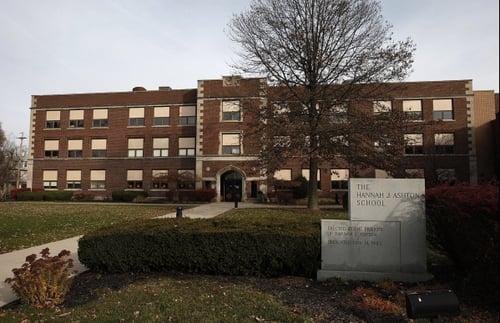I just returned from two jam-packed days at the eTech Ohio Conference in Columbus. It was my first time attending the event and I was really impressed by the level of energy and enthusiasm around blended learning. I had the opportunity to kick off the conference by co-presenting with Denise Lutz (principal at Hannah Ashton Middle School in Reynoldsburg, Ohio) about our blended learning work at her school. Despite our less than ideal time slot (8AM on the first morning of the conference—right before the key note!), about 30 teachers and school administrators attended our session.
Denise started the session off by providing an overview of Hannah Ashton Middle School’s (HAMS’s) 21st Century Learning Model, which includes two key components: Blended Learning and Achieve After Three (their innovative afterschool program). We spent the rest of the session focusing on blended learning at HAMS—how it has evolved this year, some key lessons we’ve learned, and what her plan is for next year.
I think what session attendees appreciated the most was how candid Denise was about what’s going well, as well as the challenges she’s faced this year. A few of the key learnings she shared with the group include:
1. Students need to be taught how to become online learners.
We often assume that since many students are “digital natives,” they will naturally know how to learn online. This is an incorrect assumption. We need to spend time at the beginning of the school year modeling online learning for students and developing accountability tools and procedures to help students take responsibility for, and ownership of, their own learning.
2. Leaders need to establish clear routines, procedures, and expectations around teachers’ use of data in Blended Classrooms.
Even if teachers are familiar with reviewing student data on a regular basis, it’s important to not only develop specific expectations around teachers’ use of data in a Blended Classroom, but to build in time for teachers to engage in the data analysis you expect. If designated time and clear expectations aren’t established at the beginning of the school year, it is unlikely that the level of data-driven instruction we are looking for in Blended Classrooms will happen.
3. One content provider is not enough.
Even if you believe you’ve found the end all be all of content providers, students will get bored using the same digital content provider every day. It is worth spending the time reviewing multiple content providers and selecting a portfolio of providers that complement one another.
Next year, HAMS will expand from a 7th grade blended learning pilot to a 5th-8th grade blended learning implementation and I feel fortunate to join them on this journey. Will everything go smoothly? Certainly not. Will we encounter additional obstacles and frustrations along the way? Absolutely. However, I believe the key to blended learning success is not getting it perfect the first time. It is learning from what didn’t work and doing things differently the next time. I just finished reading Paul Tough’s book, “How Children Succeed: Grit, Curiosity, and the Hidden Power of Character,” and I feel his message is particularly relevant to blended learning implementation. Blended learning is new and it’s hard (at first, at least). The schools that will succeed are those that have leaders and teachers with grit—and I am proud to be working with many of them.



